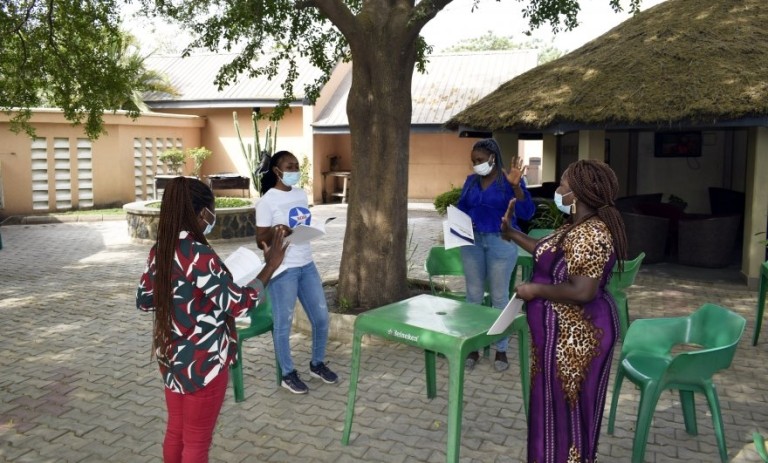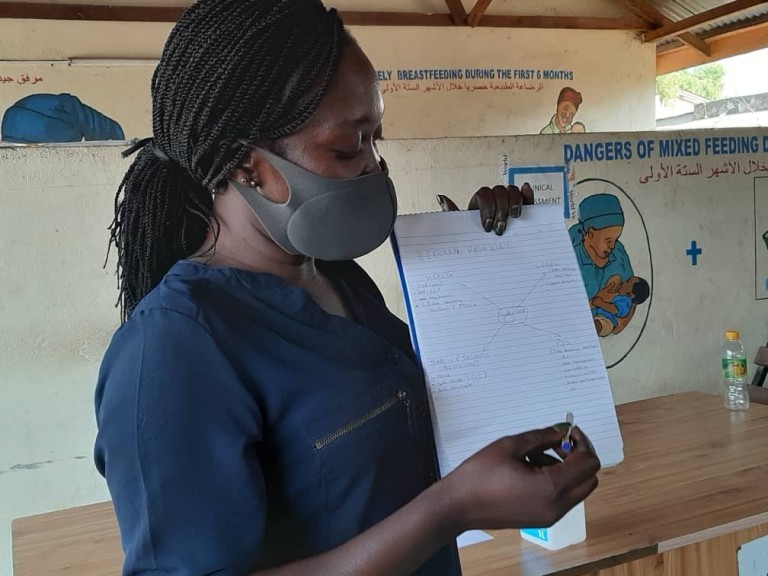News
Achieving HIV epidemic control amidst a global pandemic

Despite the global Covid-19 pandemic, the ACHIEVE consortium has been committed to reaching our targets to control the HIV epidemic. Now in its second year, ACHIEVE – Adolescents and Children HIV Incidence Reduction, Empowerment and Virus Elimination – is a five-year global effort funded by USAID to reach and sustain HIV epidemic control among pregnant and breastfeeding women, adolescents, infants and children.
At mid-year FY21, ACHIEVE has reached nearly 60,000 OVC and caregivers and almost 40,000 adolescent girls and young women. We work in eight countries, each with their own unique contexts, across Africa and the Caribbean.
This past year during the pandemic, we have seen an increase in the needs of adolescent girls and young women (AGYW). Accessing services is harder when hospitals are overflowing and health centers don't have supplies. Supply chains have been disrupted and there have been many shortages. While we have had to reduce or postpone group interventions, our community health workers and community volunteers are still visiting homes in cases of emergency. In the Dominican Republic, our community volunteers were getting emergency responder badges so that even during curfews, they were able to go out and conduct visits.
Another way we’re helping with the continuity of care through a global pandemic is through encouraging decentralized drug distribution. This way, caregivers and children may receive their medications closer to home, at convenient distribution points and importantly not at the overflowing health centers. We've been helping to lead an effort for children to receive up to six months of their medications at a time. This also limits the need to go to a health center. We developed and tested work tools for clinicians and community workers in Nigeria and Burundi, to better enable multi-month dispensing for CLHIV, which has been very well-received.
We have also adapted OVC curricula to be provided virtually, especially one that we are utilizing for child safeguarding. Normally, it would be a week-long, in-person workshop. Instead, we've worked to divide the workshop into pieces that can be delivered online. While it takes slightly longer, the adaptations to the delivery of the workshop have successfully reached local organizations in eight countries. Prevention work has been more challenging to do virtually in order to keep the fidelity of the approach, but we’ve purchased tablets for community volunteers who do some sessions that way, utilizing videos on the tablets in small groups in outdoor spaces.
In terms of building local capacity, early on in the pandemic we created a toolkit for local organizations on business continuity planning to help them handle the various shocks presenting themselves. The toolkit covers a 10-step process to be prepared for in the case of a pandemic or other emergency that organizations need to have in place, for instance a phone tree, contingency plans, and budgeting plans.
Overall, each local organization we work with and through has many different capacities in-house, and we aim to accentuate their strengths. We're using Pact’s Integrated Technical Organizational Capacity Assessment (ITOCA) and USAID’s Non-U.S. Organization Pre-Award Survey (NUPAS) to determine where they these local organizations need the most support. Often that’s with budgeting, human resources and procurement systems that have essential elements in order for USAID to be able to directly award to them. We work with partners to own their own capacity development and co-create capacity action plans with a timeline and responsible person. Also, soft skills are often overlooked, but are necessary for interacting well with USAID, and this is where our mentoring program comes in.
The runway might be longer for some organizations and shorter for others. We are in the process of transitioning over 20 partners, with two who are already getting direct U.S. government funding after working with us, and four who won direct awards but are still benefiting from our capacity development activities.
In 2013, Pact developed the Capacity Solutions Platform (CSP) to make capacity development data reliable, transparent and actionable for ourselves, partners and donors. We have collected data about our local partners and hope to be able to share that with USAID so they can see where organizations are on the transition pathway. Of course, there are still many data privacy concerns to sort out before any data sharing can take place.
Considering that girls and women are much more likely to be infected by HIV, and with PEPFAR funding for the DREAMS partnership now more than doubled, we have quickly scaled up our activities in places like South Sudan, Namibia, and Tanzania. We’ll be conducting a DREAMS saturation analysis in Namibia, we will be presenting lessons learned from Rwanda at the American Public Health Association’s annual meeting, and we will shortly publish findings on our pathways to employment curriculum.

The resilience and dedication of our staff and support from our donor, USAID, have allowed the ACHIEVE project to continue to perform against targets and reach people with valued services. Keeping the promise to serve the most vulnerable populations in the communities is what motivates us and ultimately drives our success.
ACHIEVE – Adolescents and Children HIV Incidence Reduction, Empowerment and Virus Elimination – is a five-year global effort to reach and sustain HIV epidemic control among pregnant and breastfeeding women, adolescents, infants and children. The project is implemented by a Pact-led consortium of top global HIV/AIDS partners, including Jhpiego, Palladium, No Means No Worldwide and WI-HER.